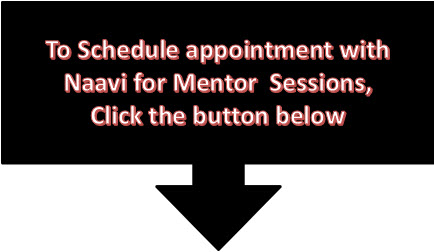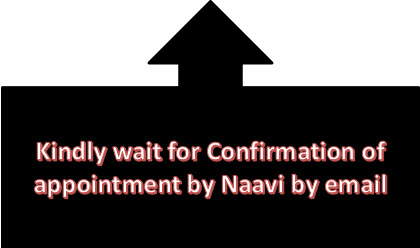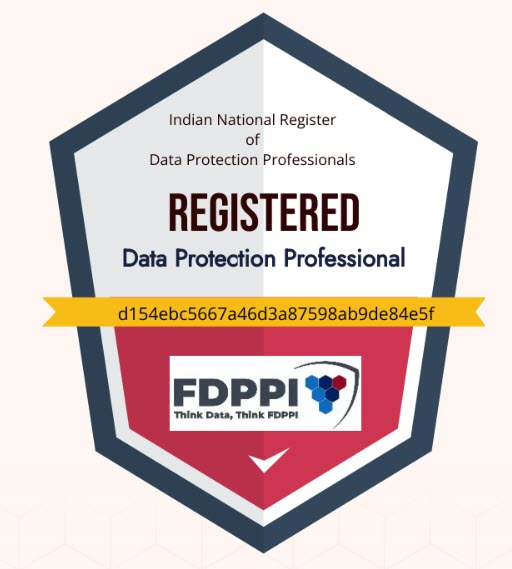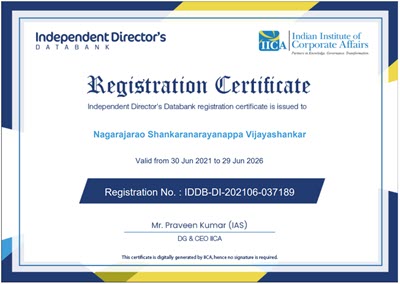This is the continuation of our discussion on the Watal Committee report on digital payment system in India.
It is not common for Committees set up by Government first of all to complete its work within the allocated time. Most Government committees extend their life by delaying the submission of their reports so that they can continue to enjoy the privileges attached to the committee for their functioning.
However it is heartening to note that this trend is changing in the Modi regime. We need to appreciate the Watal Committee set up last August for changing the trend and submitting its recommendations much before the time of one year that was set for it. The committee has responded to the changing needs following the demonetization and submitted its report far ahead of its tenure.
What is also noticeable is that the Committee has put in several recommendations and suggested a time line even for the implementation of these recommendations. This is a tradition which needs to be taken note of and appreciated.
Now that the Budget proposals for the next year has been placed before the Parliament, there was a reflection of the Watal Committee recommendations even in the Budget speech of the Finance Minister when he reminded of the proposed revision of the Payment and Settlement Systems Act 2007, promotion of digital payments within the Government service, incentivisation of digital payments etc in the Budget speech.
We can take a look at the different time lines suggested by the committee for its different suggestions.
| No | Recommendation | Type | Responsibility |
|
Recommendations suggested to be implemented within 2 weeks |
|||
| R 13 |
Other Measures – Develop metric for digital payments |
Regulatory | RBI |
|
Recommendations suggested to be implemented within 1 month |
|||
| R3: | Promote digital payments within Government – Service tax input credit for digital transactions -Utility bills and payments to Government through digital mode |
Executive | Ministry of Finance |
|
Recommendations suggested to be implemented within 2 month |
|||
| R4 | Create a fund from savings generated from cashless transactions – Create and utilise Digital Payments Action Network (DIPAYAN) | Executive |
Ministry of Finance, Ministry, of Social Justice, Ministry of, Tribal Affairs and DONER |
| R 4 |
Create a fund from savings generated from cashless transactions – Mechanism to track cash handling and transitioning to digital payments |
Executive | Ministry of Finance |
| R9 |
Allow non-bank PSPs direct access to payment systems |
Regulatory | RBI |
| R 10 | Improve shareholding and governance of retail payment organisations | Regulatory | RBI |
| R 11 | Enable interoperability | Executive and Regulatory | RBI, NPCI |
| R 13 | Other Measures – Support POS, card based and other digital transactions |
Regulatory | RBI |
| R 13 |
Other Measures – Enable faster and cheaper credit |
Regulatory | RBI |
| R 13 | Other Measures – Promote cross-border payments | Regulatory | RBI |
|
Recommendations suggested to be implemented within 2-3 months |
|||
| R5 |
Create a ranking and reward framework |
Executive | Niti Ayog, State Governments |
| Recommendations suggested to be implemented within 3 months | |||
| R6 |
Other Measures – Promote eKYC and paperless authentication |
Executive and Regulatory |
Ministry of Finance, RBI, UIDAI |
| R 6 |
Other Measures – Implement disincentives for usage of cash |
Executive | Ministry of Finance- |
| R 6 |
Create awareness and transparency |
Executive and Regulatory |
Ministry of Finance, NITI,Aayog, RBI, Ministry of HRD, DoPT |
| R6 |
Other Measures – Create parity between cash and digital payments |
Executive and Regulatory |
Ministry of Finance, RBI, UIDAI |
| R 6 |
Other Measures – Promote USSD based payments |
Executive and Regulatory |
Ministry of Finance, RBI, TRAI, DoT |
| R8 |
Consider updating payment systems to operate on 24*7 basis |
Regulatory | RBI |
| Recommendations suggested to be implemented within 3-4 months | |||
| R 12 |
Create formal mechanism to allow innovations and new business models |
Regulatory | RBI, Niti Aayog |
| Recommendations suggested to be implemented within 6 months | |||
| R7 |
Consider outsourcing of payment systems |
Regulatory | RBI |
| R 13 |
Other Measures – Regulations on SIPS and SIFI |
Regulatory | RBI |
One of the first tasks that was scheduled to be completed was “Development of Metric for Digital Payment”. The committee recognized that there is a need to measure the progress of digital payments and expected that within 2 weeks from the publication (December 9, 2016) of the report RBI would come up with the comprehensive metric to quantitatively measure and monitor the enhancement of digital payment services in India.
It appears that RBI has so far been able to come out with payment system indicators only upto November 2016. The data is still a compilation of the different aspects such as RTGS, CCIL operated systems, Paper Clearing, Retail Electronic Clearing, Cards, Prepaid Instruments, Mobile Banking, etc. The Watal Committee suggested that we need to develop clarity on what constitutes digital payment and develop a “Comprehensive Metric”. It appears that RBI is yet to come up with a solution on this.
As we have found recently in the measurement of the deposits of demonetized currency, where duplications of deposits between Banks created a difficulty in assessing the real amount of currencies returned, even in the digital payment systems, there would be difficulty in collecting the details avoiding duplication.
Amongst the digital payments there would be some which touch the Bank accounts and some which donot. For example I may transfer money from my Bank account to my PayTm account This is a digital transaction that touches the Bank system and can be measured accurately by RBI with information from the Bank by assigning the transferee code to all RTGS/NEFT/IMPS/UPI/BHIM/USSD payments and receipts.
However when I use PaytM to pay my Uber bill, it completes the life cycle of the money which I loaded to PayTM but does not touch the Bank.
When I transfer money from one PayTM account to another PayTM account, again the transaction does not touch the Bank.
When I make payment to Uber or transfer to another PayTm account, it extinguishes the life cycle of my PayTm load, but it starts the life cycle of the next PayTM load of the person to who I made the payment. These are different transactions that will have impact on the economic activity and needs to be tracked.
Therefore there is need to assign tracking codes for all payment types from the mobile wallets if we need to track them.
Those transactions that are cleared through the NPCI can perhaps be tracked with appropriate codes being inserted to the transaction based on the source and destination. But mobile wallet transactions are also cleared through private payment gateways. Here it becomes difficult to track the origin and destination of transactions that take place within the system of private digital systems. Only those which touch the Bank accounts at the destination comes to the notice of the RBI.
Similarly, when I transfer money from Paytm to PayU it becomes a “Inter-Wallet” transaction that does not touch the Bank.
Hence RBI will be able to monitor only transactions that start and end with the banking system.
If this system needs to be changed, it will take effort and a review of many private gateway systems where authentications and settlements take place. I am not sure if this can be accomplished quickly. Perhaps we need to build a transaction reporting system making use of the “Block Chain technology” to effectively monitor the system.
In the meantime, RBI can monitor movement of digital money “From Banking system to the Private Digital Money Network” and “From the Private Digital Money Network to the Bank”. This data will perhaps be reilable and will be an economic indicator of how the “Non Bank Digital Money Network” is expanding.
Within each “Private Digital Money Service Provider” (PDMSP) the number of transactions and value can be tracked by tracking the transaction processing data which is normally handled by a handful of IT Companies providing the back end services. The list of such Private Digital Money Service Provider is available with RBI since RBI authorizes such activities (Refer here). If each of these Service Providers submit periodical data of transactions processed and we de-duplicate the transaction between these companies and the Banks who report directly to RBI, then we will have a reliable indicator of the digital money transactions in the country.
When money is transferred from one Bank account to another Bank account of the same person or one Wallet to another wallet of the same person, the transaction should be considered as a “Transfer” transaction and should be taken out of the over all counting though it may be recorded as a “Contra” entry for statistical purpose and for fraud monitoring purpose.
In the above discussions, I have used the Bank account as the basic indicator of the money repository. In due course when every Bank account is tagged to a mobile or an Aadhaar, we may consider the possibility of using either the mobile number or Aadhar as the fundamental tracking element instead of the bank account. However even here there could the problem of multiple Bank accounts which are linked to the same mobile number or Aadhaar number.
The ultimate solution for tracking may be only in the use of “Blockchain technology” where every element of digital currency is associated with some wallet and every transfer is entered into a block chain register. In that scenario, each Bank account will also be a digital currency wallet and cash holding will be reflected as a “Personal Wallet”. The aggregate of the “Personal Wallet balances” will be the total currency in float as we now define. This may however require another major change of monetary policy bigger than the demonetization and perhaps is left for the post 2019 Modi regime.
These are some random thoughts that are put forth for consideration.
The suggestion of use of “Block Chain Technology” is a more comprehensive but complicated suggestion that needs to be developed further.
Comments are welcome.
Naavi










